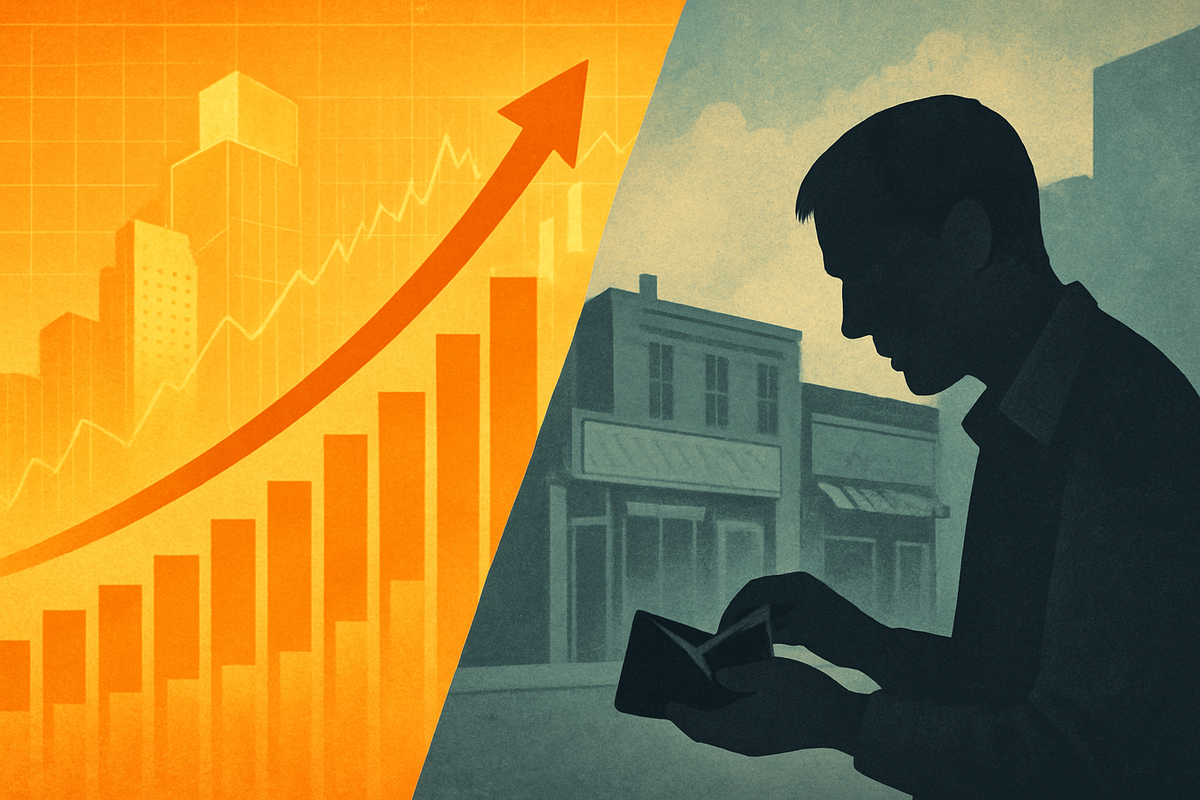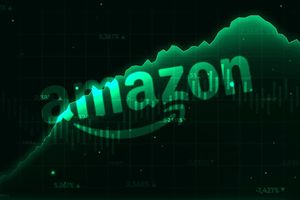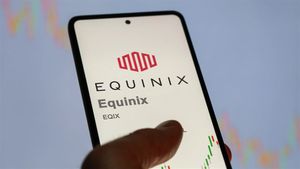
The U.S. stock market has been on an unprecedented ascent, with major indices like the S&P 500 (SPX) repeatedly hitting record highs throughout 2024 and 2025. Yet, beneath the celebratory headlines, a troubling divergence has emerged: consumer stocks, often considered the pulse of the American economy, have largely been absent from this historic rally. This stark contrast has prompted concerns from financial experts, including CNBC, which recently reported, "something is wrong with the consumer," highlighting a potential disconnect between Wall Street's exuberance and Main Street's underlying health.
This divergence signals more than just a sector-specific slowdown; it points to deeper fragilities within the economy and uneven consumer sentiment. While mega-cap technology and AI-driven companies have propelled the market to new stratospheric levels, the struggles of consumer-facing businesses suggest that not all segments of the population are participating equally in the current economic narrative. The immediate implication is a market rally built on a narrower foundation, raising questions about its sustainability and the true breadth of economic prosperity.
A Rally Unseen by Main Street
The current market environment is characterized by a robust, tech-led surge that has pushed the S&P 500 (SPX) to unprecedented levels. In 2024, the index notched 57 record highs, achieving a 23.3% annual gain. This momentum continued into 2025, with the S&P 500 breaching 5,000 points in February 2024, 6,000 points by November 11, 2024, and reaching its highest close ever at 6,501.86 on August 28, 2025. As of October 7, 2025, the S&P 500 boasted an impressive 15.31% year-to-date return, with the Nasdaq 100 (NDX) outperforming at 18.22%. This remarkable performance has been largely fueled by transformative advancements in artificial intelligence (AI) and green technologies, alongside strong corporate earnings from mega-cap growth companies and an accommodative monetary policy from the Federal Reserve, which is anticipated to continue with rate cuts into Q3 2025.
However, this broad market strength has not translated evenly across all sectors, particularly within the consumer segment. Consumer stocks are broadly categorized into Consumer Discretionary (XLY), which includes non-essential goods and services, and Consumer Staples (XLP), encompassing essential items. Both have exhibited varied and often lagging performance compared to the high-flying technology sector. Consumer Staples, traditionally a defensive sector, has consistently underperformed. As of October 7, 2025, the Consumer Staples Select Sector SPDR Fund (NYSEARCA: XLP) had seen only a modest 0.4% rise year-to-date, making it the weakest-performing sector in 2025 so far and remaining flat in Q3 2025 while the broader market surged. This underperformance is attributed to a "risk-on" market favoring growth, still-high interest rates making dividend yields less attractive, and even concerns about the impact of GLP-1 weight-loss drugs on certain food and beverage consumption.
Consumer Discretionary stocks have experienced a more cyclical journey. After lagging significantly in the first half of 2024, rising less than 5% while the S&P 500 gained nearly 15%, the sector saw a strong rally in late 2024, outperforming the S&P 500 with a 33.1% gain for the year. This rebound was driven by resilient spending from higher-income earners and a strong job market. However, the sector lagged again in the first half of 2025, dropping 4.2% for its worst first-half performance in three years, before climbing 8.9% in Q3 2025. This volatility highlights its sensitivity to economic shifts, with specific issues like a nearly 22% drop in Tesla (NASDAQ: TSLA) stock in early 2025 due to weak EV sales and intensifying competition, significantly impacting the sector's overall performance. The underlying issues affecting consumer sentiment, such as depleted savings, moderating inflation that remains elevated for some, and high borrowing costs, continue to weigh on these companies.
Winners and Losers in a Divided Market
The current market dynamics create a clear delineation between companies that are thriving amidst the tech-led rally and those struggling with a cautious consumer. On the winning side are primarily the mega-cap technology and AI-focused giants that have driven the broader market's ascent. Companies like Nvidia (NASDAQ: NVDA), Microsoft (NASDAQ: MSFT), and Alphabet (NASDAQ: GOOGL) have seen explosive earnings growth and investor enthusiasm, benefiting from massive investments in AI infrastructure and cloud computing. Their robust performance has disproportionately lifted market indices, creating a "wealth effect" for their shareholders and contributing to the perception of a strong economy, even if it's not universally felt.
Conversely, many consumer-facing companies, particularly those in the Consumer Discretionary and Consumer Staples sectors, find themselves on the losing end. In Consumer Discretionary, companies heavily reliant on big-ticket purchases or discretionary spending by lower to middle-income consumers are feeling the pinch. For instance, automotive companies beyond the high-end luxury segment, specialty retailers, and certain restaurant chains may face reduced demand as consumers prioritize essential spending and grapple with higher interest rates on loans. The struggles of Tesla (NASDAQ: TSLA) earlier in 2025, stemming from weak EV demand and increased competition, serve as a prime example of how even prominent discretionary players can be vulnerable to shifts in consumer appetite and market saturation.
Within Consumer Staples, companies that produce everyday necessities might seem resilient, but they face their own set of challenges. While demand for essential goods remains relatively stable, these companies often lack the growth potential that investors are currently chasing. Furthermore, they are sensitive to commodity price fluctuations and intense competition, which can squeeze profit margins. The rise of GLP-1 weight-loss drugs has also introduced a novel headwind for some food and beverage companies, as investors speculate on long-term impacts on consumption patterns. Companies like Coca-Cola (NYSE: KO), PepsiCo (NASDAQ: PEP), and Procter & Gamble (NYSE: PG), while generally stable, have seen their stock performance lag the broader market as investors rotate into higher-growth opportunities. Their defensive nature, once a strength, becomes a drag in a "risk-on" environment.
The Broader Economic Tapestry and Historical Echoes
The current divergence between a soaring stock market and a struggling consumer sector paints a complex picture of the broader economic landscape. This phenomenon highlights concerns about market breadth and sustainability. A rally heavily concentrated in a few mega-cap technology stocks, while impressive, raises questions about the overall health of the market. If these leading sectors falter, the entire market could be vulnerable, underscoring the risks of an over-reliance on a narrow set of companies for market performance. This situation contrasts with healthier rallies that show broad participation across various industries and market capitalizations, indicating a more robust and widespread economic recovery.
Furthermore, this divergence points to underlying economic fragilities, specifically a "tale of two consumers." While higher-income earners, buoyed by stock market gains and home equity, continue to spend, lower and middle-income consumers face persistent pressures from elevated, though moderating, inflation and high borrowing costs. This disparity in purchasing power leads to uneven economic recovery, where robust S&P 500 earnings (often from large, internationally exposed tech companies) mask a potentially slowing U.S. economy, particularly for small and mid-cap companies and segments of the consumer base. The "wealth effect" from a surging stock market, which typically encourages increased consumer spending, is thus unevenly distributed, primarily benefiting those with significant equity holdings.
Historically, periods of narrow market leadership have often preceded broader market corrections or shifts. For instance, the dot-com bubble of the late 1990s saw a similar concentration of gains in technology stocks before a significant downturn. While the current situation is not a direct parallel, the principle of a market rally lacking broad participation can signal underlying imbalances. Regulatory bodies and policymakers will be closely watching consumer spending data and inflation trends. Should consumer sentiment continue to deteriorate, there could be increased pressure on the Federal Reserve to accelerate interest rate cuts, or even for fiscal policies aimed at stimulating consumer demand, although the Fed's primary focus remains on inflation and employment.
Navigating the Road Ahead
Looking ahead, the market faces several potential scenarios, both short-term and long-term, contingent on evolving economic data and central bank actions. In the short term, the Federal Reserve's anticipated interest rate cuts in Q3 2025 could provide a much-needed catalyst for consumer spending. Lower borrowing costs could ease financial pressure on households, potentially stimulating demand for both discretionary and essential goods. This could lead to a broadening of the market rally, with investors rotating out of richly valued technology names and into more attractively priced cyclical sectors, including consumer discretionary and even some consumer staples, which may offer better value.
However, challenges persist. If inflation proves stickier than anticipated or if the labor market shows signs of significant weakening, the Fed's ability to cut rates aggressively could be constrained. This scenario would likely prolong the struggles for consumer stocks, as households continue to grapple with reduced purchasing power and tighter credit conditions. Companies within the consumer sector may need to implement strategic pivots, focusing on cost efficiencies, innovative product offerings that provide clear value, and targeted marketing to resilient consumer segments. Those with strong balance sheets and diversified revenue streams will be better positioned to weather prolonged periods of cautious consumer spending.
Long-term possibilities include a sustained shift in consumer behavior towards value-consciousness and experiences over material goods, particularly among younger demographics. This could necessitate fundamental changes in business models for traditional retailers and product manufacturers. Market opportunities may emerge in niche consumer segments, discount retailers, and companies offering essential services that are less sensitive to economic cycles. Investors should also watch for further consolidation within the consumer sector as stronger players acquire weaker ones. Ultimately, the future trajectory will depend on the interplay between monetary policy, inflation trends, and the resilience of the American consumer, with a critical eye on whether the current economic prosperity can truly extend beyond the tech sector.
A Divided Prosperity: What Comes Next for Investors
The current market landscape, marked by a soaring, tech-driven rally and a lagging consumer sector, presents a nuanced picture of economic health. The key takeaway is the evident "tale of two economies": one thriving on technological innovation and robust corporate earnings from a narrow group of giants, and another struggling with uneven consumer sentiment and persistent financial pressures on Main Street. This divergence underscores that while headline indices celebrate record highs, the underlying economic prosperity is not uniformly distributed, raising questions about the sustainability and breadth of the current market surge.
Moving forward, investors should critically assess market breadth and not solely rely on index performance. The concentration of gains in a few mega-cap stocks suggests a need for diversified investment strategies. Opportunities may arise in undervalued consumer stocks, particularly if the Federal Reserve's anticipated rate cuts materialize and provide a boost to consumer spending. However, a cautious approach is warranted, as continued inflationary pressures or a significant slowdown in the labor market could prolong the challenges for consumer-facing businesses.
In the coming months, investors should closely monitor consumer spending data, particularly across different income brackets, and inflation reports. The trajectory of interest rates will be a crucial factor in determining the performance of both consumer discretionary and consumer staples sectors. Companies with strong brand loyalty, efficient supply chains, and the ability to adapt to changing consumer preferences (e.g., value-focused offerings, or those benefiting from demographic shifts) may prove more resilient. The market's ability to broaden its rally beyond technology will be a key indicator of a healthier, more sustainable economic recovery. Ultimately, the path forward will reveal whether the current prosperity can truly reach all corners of the economy, or if the "something is wrong with the consumer" sentiment will continue to cast a shadow over the broader market.
This content is intended for informational purposes only and is not financial advice






